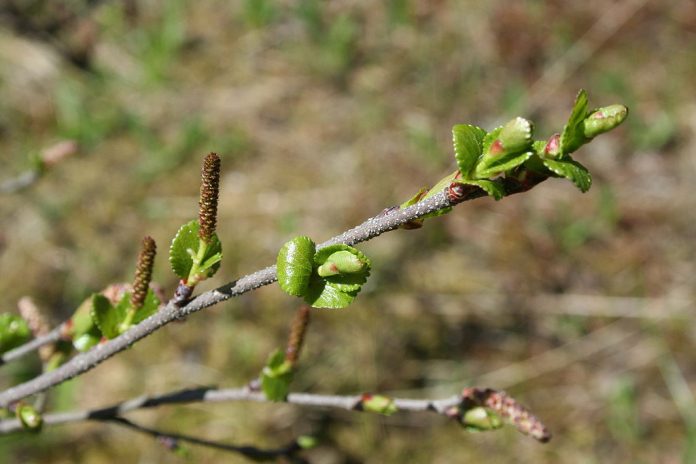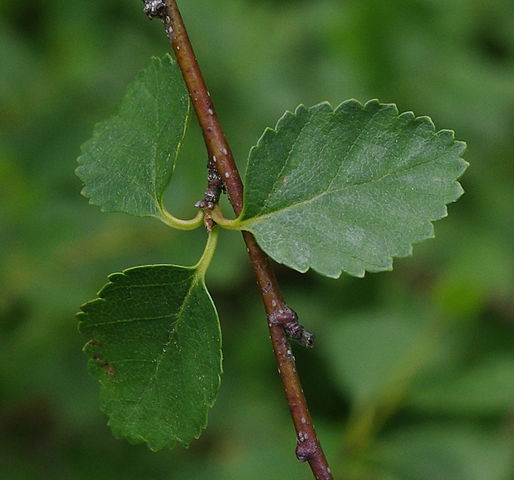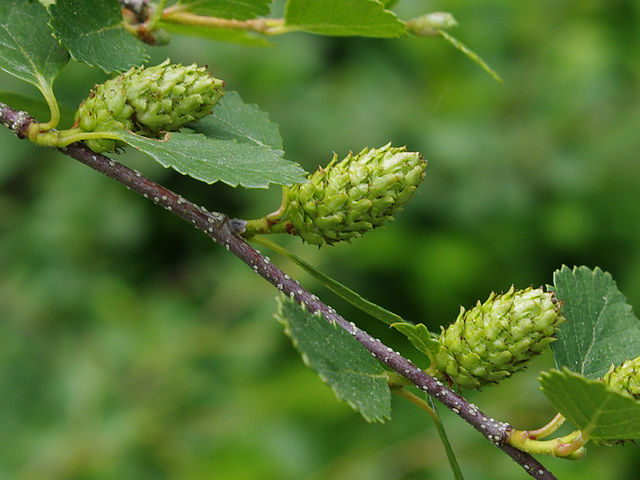
Photo by Halava / CC BY-SA 3.0
A field guide on how to identify and propagate American Dwarf Birch (Betula glandulosa), a hardy shrub that is native to eastern North America.
How to Identify American Dwarf Birch (Betula glandulosa)
Leaves

American dwarf birch leaf margins are crenate to dentate, are ovate to orbiculate-shaped, and grow on the stems in alternate arrangements.
There are usually 2-3 leaves per leaflet.
Flower

American dwarf birch (Betula glandulosa) has small yellow-green catkins or flowers. These catkins consist of scales that enclose male or female flowers and eventually mature into winged nutlets.
Flowering Season
You can find the fresh catkins on American dwarf birch in the spring, and harvest the mature seeds later in the summer to early autumn.
Habitat
American dwarf birch (Betula glandulosa) is typically found in subarctic and alpine regions of boreal forests and tundra, you can find them in North America, as well as Europe and Asia. Look for them in open forests, tundra, heathlands, and wetlands.
Some other understory plants that associate with American dwarf birch are:
- Lingonberry (Vaccinium vitis-idaea)
- Labrador tea (Rhododendron groenlandicum)
- Arctic blueberry (Vaccinium uliginosum)
Wildlife Value
American dwarf birch (Betula glandulosa) has a low wildlife value as it provides limited food or shelter for animals. However, some animals may still benefit from it.
For example, small mammals like snowshoe hares may sometimes feed on the twigs and buds of american dwarf birch.
In addition, birds like grouse may use the shrubs for cover or nesting.
Despite its limited wildlife value, American dwarf birch plays a role in the ecosystem by contributing to the overall plant diversity in subarctic and alpine regions.
How to Propagate American Dwarf Birch (Betula glandulosa)

Hardiness Zone: 1-6

Soil Type: Clay, loam, sand.

Water: Normal to High.

Exposure: Full Sun to Partial Shade.
There’s one sure way to propagate American dwarf birch:
- By Seed: The success rate is high but takes a while to get established saplings.
Cuttings, for birch species, just seem not to work, but the seeds are quite easy to germinate.
How to Propagate American Dwarf Birch (Betula glandulosa) by Seed
If you want to propagate this shrub yourself, all it requires is being at the right place and at the right time and being able to identify them.
Bog birch catkins are ready to harvest by late summer through fall and even in winter.
How to Harvest Seeds
The seeds are found on the brown catkins in hundreds, you can simply pull them off the twigs into a plastic or paper bag.
Sowing
Bog birch seeds do not require cold stratification to germinate, light and water are all it requires.
Although it would still benefit them to cold stratify, here’s how:
Place the seeds in a plastic bag with any sterile medium (vermiculite, sand, or paper towel), lightly moisten, and place into your refrigerator for at least 90 days.
Keep them in a part of your fridge where the temperature doesn’t change, like the very back, and not in the fridge door.
When it comes to germination, sow seeds under a fine layer of soil, and water regularly. Keep in a well lit area and they should germinate within 2 weeks.
FAQ
A: They grow on average up to 6-8 feet in height and not much more.
A: They are very hard to distinguish, B. glandulosa grows a bit taller than B. nana, but they grow in the same range. Betula nana leaf margins are also smoother than Betula glandulosa’s dentate margin.
